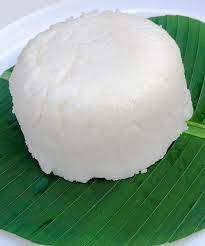- Home
- Travel news
- MICE business
- Country news
- Abu Dhabi
- Argentina
- Armenia
- Austria
- Azerbaijan
- Australia
- Bali
- Baltic
- Belgium
- Bolivia
- Botswana
- Brazil
- Budapest
- Cambodia
- Canada
- China
- Chile
- Colombia
- Costa Rica
- Croatia
- Cyprus
- Czech Republic
- Dubai
- Ecuador
- Egypt
- Finland
- France
- Germany
- Greece
- Hong Kong
- Iceland travel news
- India
- Ireland
- Israel
- Italy
- Japan
- Jordan
- Kazakhstan
- Kenya
- Lebanon
- Malaysia
- Malta
- Mauritius
- Mexico
- Montenegro
- Morocco
- Namibia
- Netherlands
- New Zealand
- Oman
- Panama
- Peru
- Poland
- Portugal
- Russia
- Qatar
- Saudi Arabia
- Scandinavia
- Scotland
- Senegal
- Serbia
- Singapore
- Slovenia
- South Africa
- Travel news South Korea
- Spain
- Switzerland
- Travel news Tanzania and Zanzibar
- Thailand
- Tunisia
- Turkey
- Ukraine
- United Kingdom
- USA
- Uzbekistan
- Vietnam
- West Africa
- Zambia and Zimbabwe
- Useful links
- Sports events calendar
- Contact/contribute

What’s cooking? World recipes

A bit of ugali history
Before the 19th century, sorghum and millet were the primary grains produced and consumed in Kenya. Corn, or maize, the main ingredient in ugali, was introduced to the area by Portuguese traders. It was initially produced for export, but was eventually adopted by locals, who transformed it into the simple and nourishing porridge called ugali.
Today, ugali is a staple of the Kenyan diet, eaten by many on a daily basis. It is generally served as a side – the perfect accompaniment for stews, curries, or veggie dishes.
If you visit Kenya, don’t be surprised to see locals eating ugali with their hands, using it almost like a utensil. The proper way is to pinch a small bit off with your fingers, roll into a ball, and use your thumb to make a small depression for scooping up a bite of stew.
Notes on the recipe
Ugali doesn’t generally call for salt. This recipe follows that tradition. If your tastebuds require a bit of saltiness, simply add a big pinch of salt to the water at the beginning of cooking, or top with salted butter at the table.
You will want to use a sturdy wooden spoon for cooking the ugali. Expect to get a workout in the process, as the dough becomes quite stiff.
You’ll know the ugali is cooked when it starts to pull away from the sides of the pan, and begins to take on the aroma of roasted corn.
Ugali – Kenyan cornmeal
Print
Simple and satisfying, this cornmeal porridge from Kenya, called Ugali, is the perfect accompaniment to soups, stews, and savory curries.
Author: Sandra Mukidza
Recipe type: Side
Cuisine: Kenyan
Serves: 4 as a side
Ingredients
2 cups water
1½ cups medium or coarse-ground white cornmeal (white is traditional, but yellow works fine)
Instructions
Bring the water to a boil in a medium sauce pan.
Reduce the heat to low, and stirring constantly with a whisk, slowly add the cornmeal to the boiling water. The ugali will begin to thicken quite quickly.
Continue cooking on low heat, stirring every minute or so with a sturdy wooden spoon, until the ugali begins to pull away from the sides of the pan and hold together, and takes on the aroma of roasted corn. Turn it out immediately onto a serving plate. If you would like, using a spoon or spatula, quickly shape it into a thick disk or round.
The ugali will continue to firm as it cools, and will be thick enough to cut with a knife (similar to firm polenta).
Serve it up with your favorite savory stew or curry.
Notes
Ugali is a cornmeal porridge similiar to polenta.
The recipe does not call for any salt, but if you find your tastebuds need a bit more saltiness, you could serve it with some salted butter or add a big pinch of salt to the water at the beginning.
You will want to use a sturdy wooden spoon for cooking the ugali. Expect to get a workout in the process, as the dough becomes quite stiff.
You’ll know the ugali is cooked when it starts to pull away from the sides of the pan, and begins to take on the aroma of roasted corn.
If you’ve never tried it please make sure to ask for it when you travel to Kenya
spotted in tasteoftheplace.com

More about our Facebook Group

Private Facebook group
for the travel industry
Travel Talks Platform Group
5.8k members
Travel Talks Platform for the travel industry
Follow the travel news – Traveltalksplatform is the number 1 news site to stay updated on amazing travel facts, the latest news, events, incentive ideas, MICE news, job opportunities and shows.
Specially composed for the travel industry, you will find the latest travel facts at your fingertips.

The latest airline news, hotel news, cruise news and MICE news in your inbox:
Stay updated about
the latest travel news worldwide
Copyright © 2021 e-motions international
disclaimer:
We assume no responsibility or liability for any errors or omissions in the content of this site. The information contained in this site is provided on an "as is" basis with no guarantees of completeness, accuracy, usefulness or timeliness.